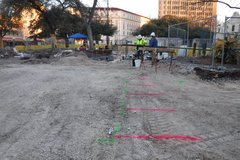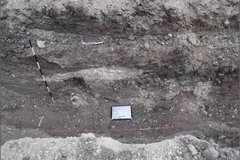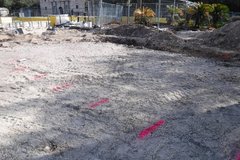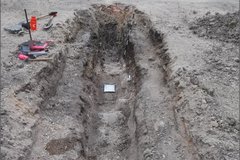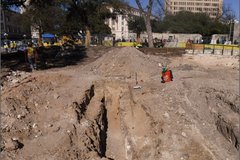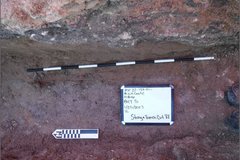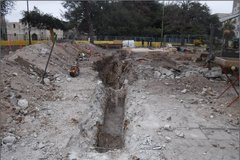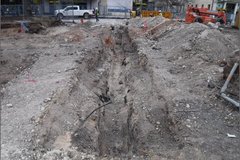With unit excavations and trenching at the location of the south wall completed in week 8, work shifted to testing investigations in advance of the construction of the Mission Gate and Lunette exhibit. Testing via backhoe trenching and additional monitoring was approved at the Texas Historical Commission Executive Meeting on January 18. Investigations continued throughout the week.
The first trenches to be excavated were those that were within the tree removal zone. In order for the successful removal and relocation of a live oak tree, which currently resides in the project area, tree removal experts will need to excavate a 60 ft x 30 ft x 4 ft trench. To determine if any buried cultural resources will be impacted by the tree work, archaeologists directed the excavation of three backhoe trenches within this zone. Trenches were approximately 15 ft in length, 3 ft in width (with an additional 1 ft bench on either side), and were terminated at hardpan, which ranged from 3.5 to 4.5 ft below surface. Archaeologists followed Council of Texas Archaeologists trenching protocols.
BHT 3 was the eastern most trench in the tree excavation zone (Figure 1). Evidence of previous disturbance, such as an old utility trench, was visible throughout the trench wall profiles. Very few artifacts were recovered. Soils suggest multiple construction episodes or intentionally deposited soils (Figure 2). Hardpan was encountered at approximately 130 cm below surface.

